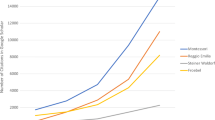Abstract
During the first week of March 1968, high school students staged a fiveday walkout in six Los Angeles high schools—Garfield, Roosevelt, Lincoln, Wilson, and Belmont High Schools, all predominantly chicano schools in East Los Angeles, and Jefferson High School, a black school in South L.A. These dramatic school walkouts highlighted curriculum and dress code issues; dramatized the lack of resources and inferior schooling conditions in schools that educated black and Latino children; pressed for college prep courses and more black and Latino teachers/administrators; and demanded more community input into how the school was run. The Mexican American newspaper La Raza proclaimed the significance of these events, “The first 15 days of March of the year 1968 will be known in the ‘new’ history of the Southwest as the days of the BLOWOUT... These days became the moment of truth to many people.“3
We waited a long time for those folks to do something to improve our schools, but they let us down and so we have decided to do the job ourselves. —Jefferson High School student, March 19682
I am deeply grateful to Steve Lang whose experiences as a student at Fremont in the 1960s and as a teacher there for more than thirty years have helped me see this history in new ways. All mistakes are, of course, mine but if I have managed some fundamental truth in this narrative of high school activism, it is due in large measure to Steve’s support and insights. Matthew Ides, Mark Wild, Peniel Joseph, Alejandr a Marchevsky, Prudence Cumberbatch, and Komozi Woodard offered crucial insights and feedback on this work. A Rockefeller Humanities Fellowship, a CUNY Scholar Incentive award, and a Tow Travel Fellowship supported this research.
Access this chapter
Tax calculation will be finalised at checkout
Purchases are for personal use only
Preview
Unable to display preview. Download preview PDF.
Similar content being viewed by others
Notes
See Jeanne Theoharis, “Alabama on Avalon: Rethinking the Watts Uprising and the Character of Black Protest in Los Angeles,” in The Black Power Movement (New York: Routledge, 2006)
Josh Sides, L.A. City Limits: African American Los Angeles from the Great Depression to the Present (Berkeley: University of California Press, 2003).
Bob Smith, They Closed Their School: Prince Edward County, Virginia 1951–1964 (Greensboro: University of North Carolina Press, 1965).
For further elaboration of the problematics of the North-South dichotomy, see Jeanne Theoharis and Komozi Woodard, Freedom North: The Black Freedom Struggle Outside of the South, 1940–1980 (New York: Palgrave Macmillan, 2003).
See, for instance, Peniel Joseph, Waiting for the Midnight Hour (New York Henry Holt, 2006) and The Black Power Movement (New York Routledge, 2006); Yohuru Williams and Jama Lazerow, In Search of the Black Panther Party (Durham, NC: Duke University Press, 2006)
Scot Brown Fighting for US (New York: New York University Press, 2003)
Komozi Woodard, A Nation within a Nation (Chapel Hill: University of North Carolina Press, 1999)
Charles Jones, ed., The Black Panther Party Reconsidered (Baltimore: Black World Press, 1998)
Kathleen Cleaver and George Katsiaficas, eds., Liberation, Imagination and the Black Panther Party: A New Look at the Panthers and Their Legacy (New York: Routledge, 2001)
Robert Self, American Babylon: Race and the Struggle for Postwar Oakland (Princeton, NJ: Princeton University Press, 2003).
Editor information
Copyright information
© 2010 Peniel E. Joseph
About this chapter
Cite this chapter
Theoharis, J. (2010). “W-A-L-K-O-U-T!”: High School Students and the Development of Black Power in L.A.. In: Joseph, P.E. (eds) Neighborhood Rebels. Contemporary Black History. Palgrave Macmillan, New York. https://doi.org/10.1057/9780230102309_6
Download citation
DOI: https://doi.org/10.1057/9780230102309_6
Publisher Name: Palgrave Macmillan, New York
Print ISBN: 978-0-230-62077-3
Online ISBN: 978-0-230-10230-9
eBook Packages: Palgrave History CollectionHistory (R0)




